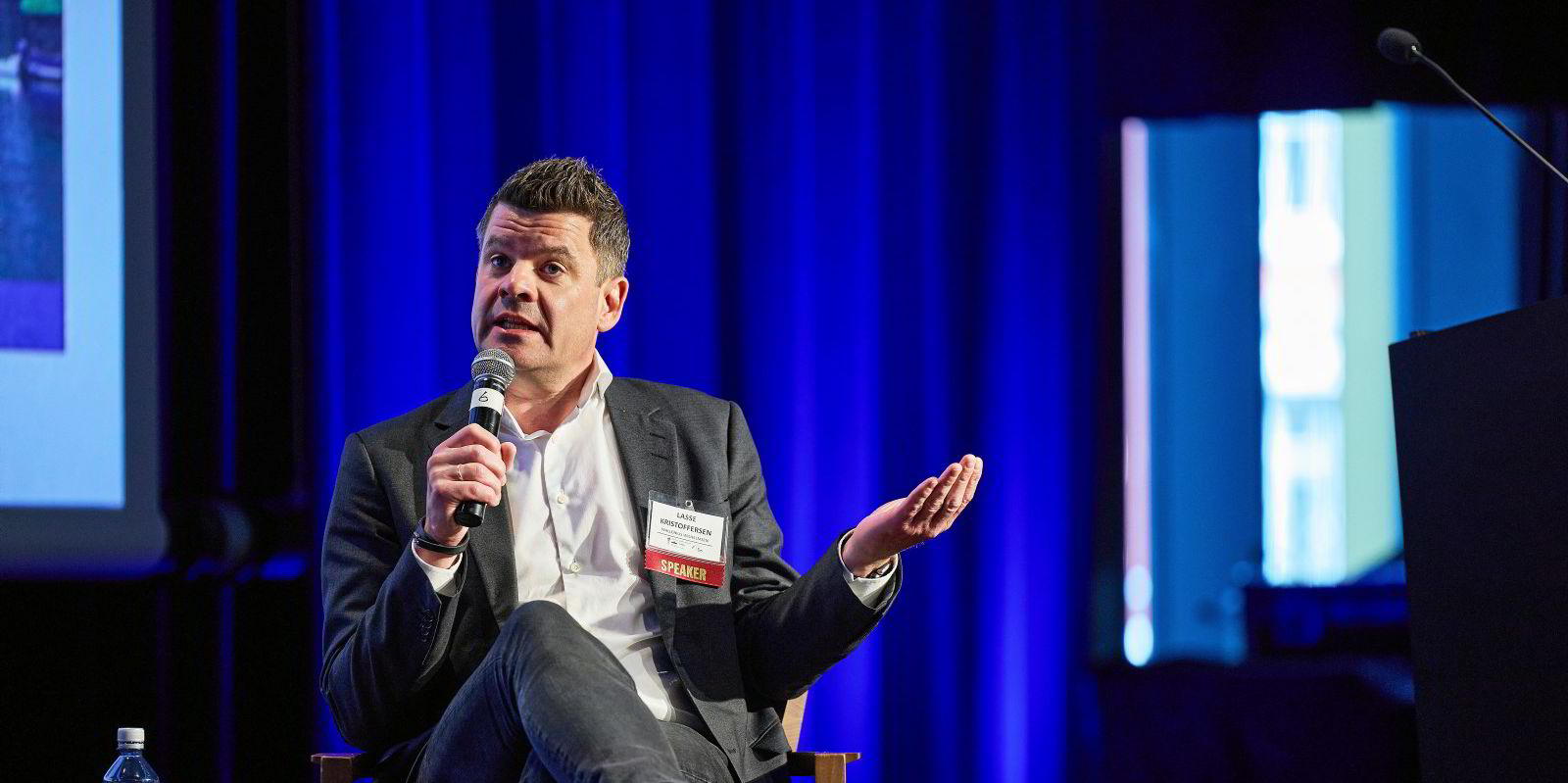South Korea’s Hyundai Glovis is poised to make a groundbreaking move by ordering the world’s largest pure car/truck carrier newbuildings.
The logistics and shipping division of Hyundai Motor Group has disclosed its intent to order a dozen LNG dual-fuel 10,800-ceu PCTC vessels.
Shipbuilding sources tell TradeWinds the South Korean company is in advanced discussions with two Chinese shipyards for the new car carriers, with each building six.
The largest PCTC newbuildings currently on order are of 9,350 teu, which were commissioned by Wallenius Wilhelmsen in late October from China Merchants Jinling Shipyard. The Oslo-listed ro-ro shipping and vehicle logistics company booked four vessels and holds options for an additional eight units.
One car carrier expert confirmed that Hyundai Glovis’ newbuildings will become the largest PCTCs ever ordered if it firms up the contract.
“The design of Hyundai Glovis’ 10,800-ceu newbuildings are slightly different to normal PCTCs because most of the current fleet is built with a length overall of 200 metres due to port restriction, especially in the big Japanese ports,” said the car carrier expert.
“But if you don’t trade at Japanese ports, one has less [sic] restrictions in terms of [length overall].”
He said South Korean operators are exporting automobiles out of their country and the ports there can accommodate vessels up to 230 metres.
“This is what Hyundai Glovis is doing, stretching the length of the vessel and keeping the wide beam of 38 metres for the ship, so that is why it can increase the capacity of the car carrier by 1,000 ceu to 10,800 ceu.”
“This will probably be the maximum [capacity] of what we will see in PCTCs,” said the car carrier expert.
“The Japanese car carrier operators are still bound by their ports’ restrictions, and they are likely to stick to their type of ships. I don’t see the trend of PCTCs growing larger. It is only Hyundai Glovis that has opted for this type of ship.”
Hyundai Glovis is a major car carrier operator and controls some 80 vessels of which 32 are owned vessels.
Car carrier sources said the company needs new tonnage as it did not renew charter contracts for several PCTCs that expired in recent months due to high charter rates.
Hyundai Glovis did not disclose the shipyards responsible for constructing the large PCTCs. However, the company has revealed that these 12 ships will carry a total price tag of $1.84bn, with each vessel estimated at $153.3m. The expected delivery date for these ships is set for the year 2027.
Shipbuilding players following the car carrier market said Hyundai Glovis’ newbuildings are set to be built in China.
China’s GSI and SWS will each build six vessels
TradeWinds has learned that the South Korean company is in advance discussions with Chinese state-owned Guangzhou International Shipyard and Shanghai Waigaoqiao Shipbuilding for the 12 units, with each yard building six.
Officials at Hyundai Glovis were not available for comment, while GSI and SWS did not reply to emails seeking confirmation.

Shipping sources think Hyundai Glovis will not be the direct owner of the 10,800-ceu dual-fuel newbuildings. Instead, it will be chartering them under long-term contracts of 20 years from compatriot companies or financial partners.
“I expect it to be a similar structure to the previous ones and it is not Hyundai Glovis that orders the newbuildings but another South Korean company,” said one source.
Last year and in March, Hyundai Glovis inked long-term charter deals with HMM and H-Line Shipping for three and seven PCTC newbuildings, respectively, at GSI to be delivered between 2024 and 2026.
Sources said Hyundai Glovis did the “controlling process” of these charter deals by looking for the shipyard and obtaining the newbuilding slots. It then assigned the newbuilding contracts to HMM and H-Line and fixed the vessels for up to 20 years.
Besides transporting automobiles, Hyundai Glovis also has a presence in the tanker and bulker segments.
In 2021, the company entered the VLGC business with an order for two 86,000-cbm LPG carrier newbuildings at Hyundai Samho Heavy Industries. It ordered the duo against charter contracts from trader Trafigura. It is scheduled to take delivery of the VLGCs by mid-2024.
Last year, the company ordered a single 174,000-cbm LNG carrier at the same domestic yard. The newbuilding, costing $216m, was ordered on the back of a seven-year time charter contract from Australian energy company Woodside. The ship is due to roll out of the dry dock in the second half of 2024.
Hyundai Glovis has established a long-term goal of “achieving net zero” carbon by 2045 through the introduction of carbon-free ships and trucks and the transition to renewable energy.





